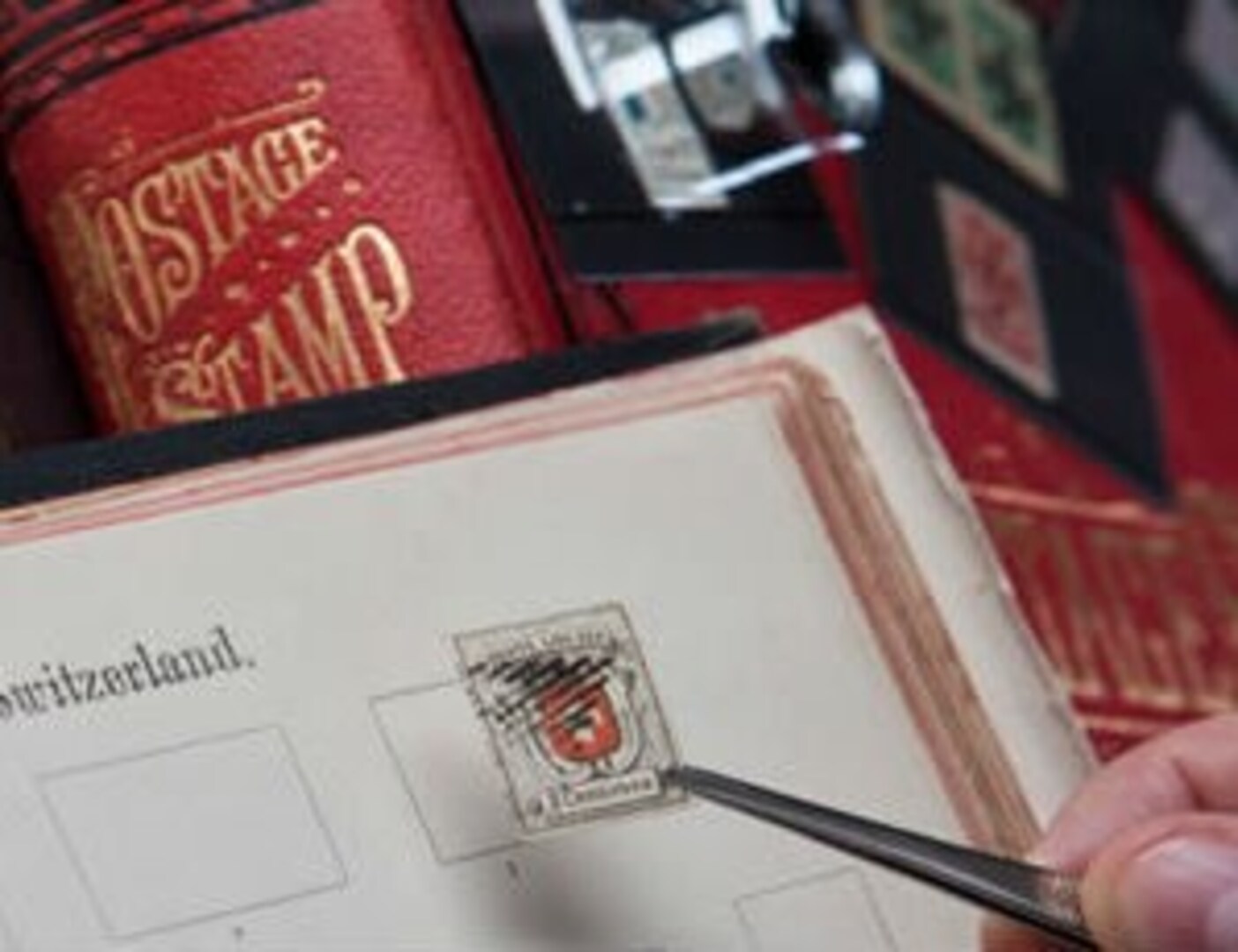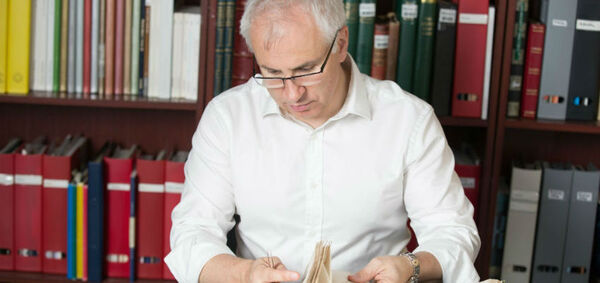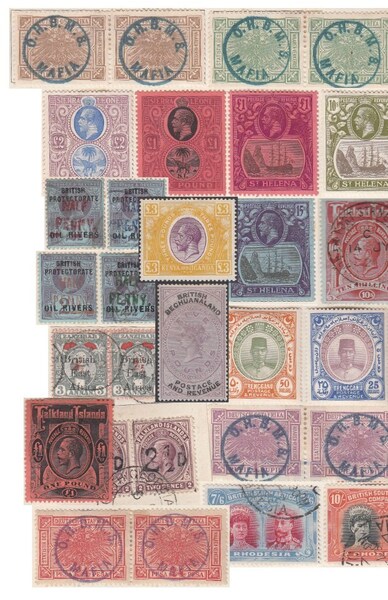Behind my desk, wedged between our specialized reference collection of Bermuda large key plate stamps and an unsteady pile of old Sandafayre catalogues an open box clearly marked “FORGERIES” sits, its maw open wide awaiting its next debunked visitor.
Often entire album pages are less than lovingly thrown into this den of iniquity, a colleague may appear in the way of an undertaker leaning over my desk, to drop another poor soul into this open grave. However such offerings are not always the disaster it might at first appear, many albums sport a page or two dedicated to fakes and forgeries so the collector was clearly not deceived, or had at least come to terms with any losses incurred (both will go into the box but we tend to call a genuine stamp which has been altered to mimic a different one a ‘fake’, and a total creation printed to deceive or simply fill a space a ‘forgery’). Other pages might contain forged stamps so completely out of keeping with the rest of the collection we can only assume that the buyer knew that he was indeed buying forgeries and not a genuine complete set of Hawaiian Missionary stamps!
Over the years I’ve been asked how to identify forgeries and often even non- collectors will make the observation that “aren’t there a lot of forgeries in your game?” This is a sensible question but rather like life in general the answer can be a little disappointing for those wanting a catch-all response. Firstly it is best to know that forgeries do actually exist on a particular stamp, as most stamps have never been forged! Secondly, and this is the tedious bit, it helps to have seen and handled genuine examples as it is amazing how inaccurate many forgeries are and that simply having seen the genuine colour or felt the original paper allows you to spot ‘something wrong’ with that bargain you made on eBay (…or hopefully help you to decide not buy it in the first instance!)
To take things further, often when a stamp is known to be ‘dangerous’ (i.e. excellent forgeries do exist) then we have our library. We currently hold around 70 books or pamphlets in the “Forgeries” section of our library but these dedicated works represent only a small portion of our available knowledge as many of the books dedicated to a single country or area also contain the information needed to identify genuine examples of frequently forged stamps. Our library also contains millions of photographs of genuine stamps. In fact knowing if we have this information and exactly where to find it is a skill in itself! Let us not forget the Internet. If we are still suspicious we will often search the web, it is amazing how much great knowledge is available, often published by clubs and societies.
If you have been collecting a while most forgeries are pretty obvious, and some designs are easier to forge than others, 19th Century classics for example with their preponderance of coats of arms and other formal designs as found on the early German, Italian & Swiss Cantonal stamps often bear closer examination, clearly portraits of important persons tend to serve as a better foil against forgery. Many years ago I had dinner with an engraver for the American Bank Note Company. She explained how the best security designs such as those on stamps and bank notes often incorporate a female face, apparently we are very good at spotting anything that changes on a women’s face yet a mans face can sprout ‘warts and all’ and it is rarely noticed!
Advice on such a large subject is difficult to give but buying the better items for your collection from known experts is a good place to start and not simply self- serving. If a great stamp at a bargain price seems too good to be true then you must always consider that it may not be what it seems!


 General
General
 General
General
 General
General